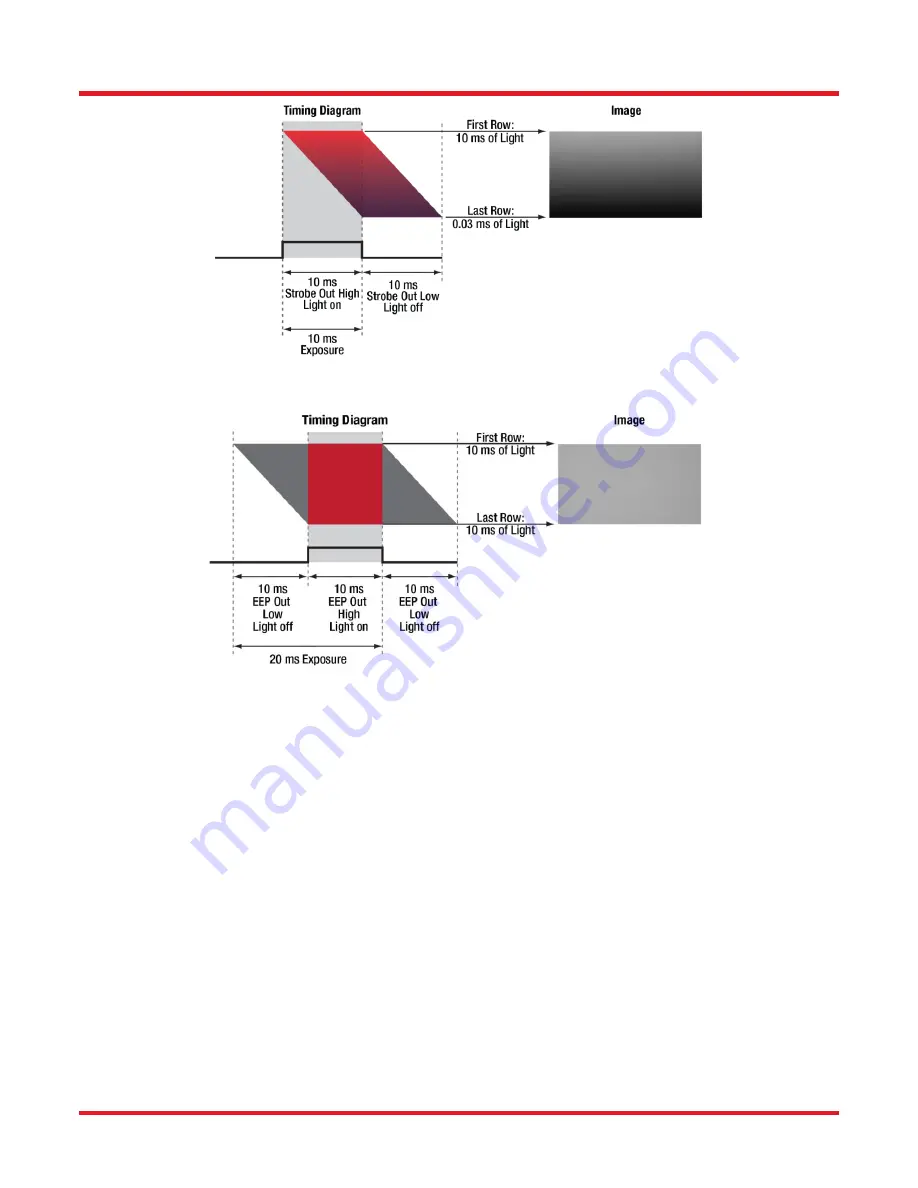
Compact Scientific Digital Cameras
Chapter 4: Operation
Rev A, June 3, 2020
Page 23
Figure 13
Timing Diagram
– Strobe Driven Exposure
Figure 14
Timing Diagram
– EEP Driven Exposure
4.4.
Hot Pixel Correction
Hot Pixel Correction is a firmware function that identifies and corrects pixels that are much brighter than their
surrounding pixels. Typically visible as very bright pixels regardless of the scene being imaged, these are
unavoidable by-products of the CMOS and sCMOS sensor manufacturing process.
This feature can be activated by checking the
Hot Pixel Correction
check box in the ThorCam acquisition software
Settings Dialog. The
Threshold
can then be adjusted using the adjacent slider or the numeric input box. The Hot
Pixel Correction box can only be checked and unchecked when the camera is stopped. Once it is checked however,
the Threshold adjustment can be made on a live image.
A hot pixel is identified by comparing with the mean value of the surrounding 8 pixels out of a 3x3 neighborhood. If
the difference between the pixel value and the mean is larger than a specified threshold value, then this pixel is
considered a hot pixel and will be replaced with the median value of those pixels in the neighborhood. As the slider
is moved towards “Aggressive,” the threshold is reduced in a linear fashion. The minimum threshold value,
corresponding to the upper limit, has been selected to provide users with the ability to correct hot pixels having a
deviation of only a few hundred counts. At this most aggressive value, it is quite likely that image signal near the
maximum pixel values (full scale) will be altered by the Hot Pixel Correction algorithm, so care must be taken at the
most aggressive levels. This correction is done in hardware and any images saved by the host application will only
have corrected data.
This feature is available on all Quantalux models.
















































